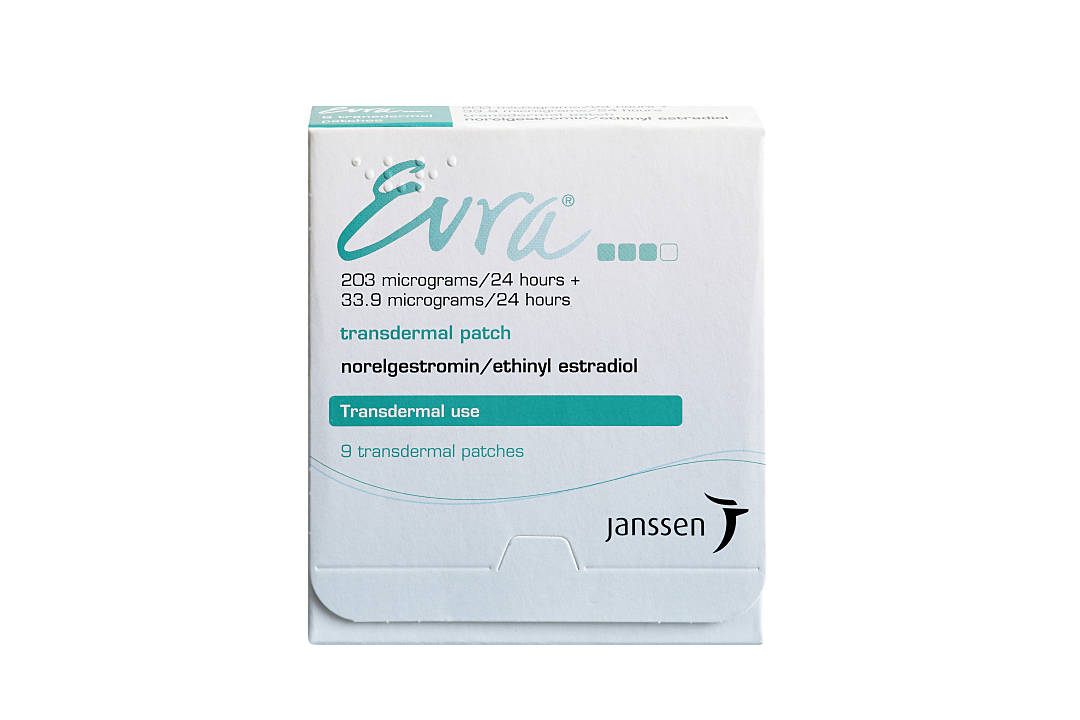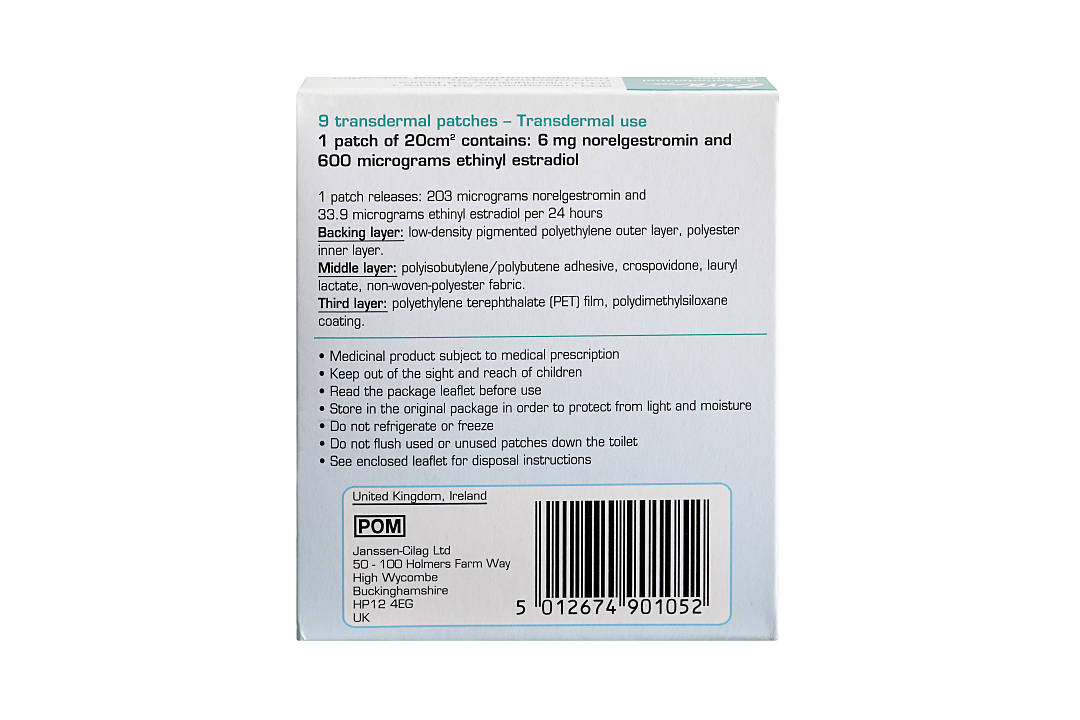The Evra Transdermal Contraceptive Patch
Hormonal patches for contraception




To place a prescription order for contraceptive patches, fill in our brief questionnaire. You can choose a preference, such as Evra or Microlite.
One of our doctors will check if the contraception is suitable for you and issue your prescription to a local pharmacy in Ireland, or your home address. Alternatively, you can choose to have your medication delivered directly to your door.
A prescription consultation for contraception costs €21.50.



About Evra
What is an Evra Patch or a contraceptive patch and how do they work?
Evra Patches are a form of contraception similar to the combined pill. They work by releasing a combination of female hormones (norelgestromin and ethinyl estradiol) over a 3-week period, every month.
The primary difference between Evra and the combined pill is that Evra transmits hormones through the skin (transdermally), as opposed to being absorbed through the stomach or inside your womb. These small, 5cmx5cm patches resemble nicotine patches and are stuck directly on the skin.
Just like the combined pill, the hormones in Evra cause changes in the mucus in your cervix, thin the uterine lining and prevent the monthly release of eggs from your ovaries, to prevent pregnancy. Evra patches do not protect from STIs.
How do I apply and where do I put an Evra Patch?
The Evra Patch is very simple to use. Simply stick it to your skin and hold it in place for a short while, ensuring the edges are also stuck down and not peeling. Each consecutive contraceptive patch should be applied to a different place on the skin to avoid potential irritation. Make sure to read and follow the instructions included with your patches.
The Evra Patch can be put on most areas of the body, as long as the area is dry, clean and not particularly hairy. It's important to make sure you do not apply the Evra Patch to sore skin, easily irritated areas, breasts, your genital area or places that may be frequently rubbed by clothing, e.g. by a tight sports bra or corset. If you are worried that Evra Patches may cause irritation after continuous use, you can change the placement of your Evra Patch each week.
Most people choose to apply Evra Patches to an area that isn't always visible; the most popular places are the stomach, upper back, bottom or upper arm. Avoid changing the patch’s position halfway through the week to suit a particular outfit or activity, as this is not recommended.
When should I start using Evra Patches?
As with the pill, you should start using Evra on the first day of your period for immediate protection. If you plan to start a course of Evra at another time of the month, or are changing the type of contraception you use, check your patient information leaflet for more information on how to use the patch in these situations. Make sure you give your doctor all the necessary information about your cycle to ensure they give you the correct advice.
Evra Patches are changed weekly over a 3-week period, with a 1-week patch-free period before starting the next cycle of patches. During the patch-free week, you may get a withdrawal bleed similar to a light period, but will still be protected from pregnancy. Begin the next set of patches after exactly 7 days, even if you are still bleeding.
How sticky is the Evra Patch? Can the Evra Patch fall off?
Evra Patches are very sticky and very rarely fall off. You can still take showers and baths, go swimming, exercise and sweat – no regular activity should cause the patch to fall off, as it's designed to stay stuck. Don't use creams or lotions on the area around Evra, though, as these can affect its stickiness.
What should I do if my Evra Patch falls off?
Check your Evra Patch daily to make sure it isn't coming loose or peeling off. If it does, dispose of it and apply another one immediately. Don't try to hold the old patch on with tape, plasters or something else if it is no longer sticky. Continue your cycle as normal.
If a patch has been off for more than 12 hours and you haven't noticed, you apply a new one and use alternative contraception such as condoms for the next 7 days, as Evra's effectiveness may have been affected.
If it comes off quickly for any reason and you notice immediately, you can re-apply (assuming it is still sticky) or apply a new one immediately and you should still be protected. Please bear in mind, this is only the case if you have been using Evra for a week or more beforehand – if your first Evra Patch falls off within a couple of days of using it, ensure you use condoms or other contraception for the next 7 days. More information can be found in the patient information leaflet supplied with Evra.
How do I remove an Evra Patch?
Despite its stickiness, it should be easy to remove an Evra Patch. If you have stuck it on an area that is mildly hairy, this may be a little painful – about the same as removing a normal plaster. Once you've taken it off, dispose of it somewhere out of reach of children or pets.
What are the advantages of using Evra Patches?
Contraceptive patches are easier for some women to use as you only have to think about them once a week when you change them. Some women find it difficult to remember to take the pill every day at the same time, whereas Evra requires replacing just once every 7 days.
Another downside of the pill for some users is that its effectiveness can be affected by heavy bouts of diarrhoea or by vomiting. If you do get vomiting or diarrhoea while taking Evra, neither of these should affect protection against pregnancy.
Evra is not uncomfortable to put on or take off, whereas some women find using the coil, female condoms or other forms of contraception uncomfortable to put in or take out.
Evra can also help regulate irregular or painful heavy periods, and reduce other symptoms such as cramping, heavy bleeding, headaches or mood swings. This isn't the case with all Evra users.
There is some evidence to suggest that Evra helps protect against certain types of cancer, including ovarian and womb cancers.
Can I get side effects from the Evra Patch?
Evra can cause side effects, ranging from very mild to severe, although severe side effects are very rarely reported. Common side effects of Evra may include:
- nausea or vomiting
- stomach aches, diarrhoea
- headaches
- mild irritation of the skin, acne
- breast tenderness
- mood swings or mild anxiety
- menstrual cramps
- spotting or bleeding between periods
- thrush infections
- changes in weight
If any of these mild symptoms persist and cause problems, discuss them with your doctor, who may suggest an alternative form of contraception.
Uncommon side effects of Evra include:
- fluid retention
- insomnia, decreased libido
- high blood pressure
- skin sensitivities, eczema
- vulvovaginal dryness
- application site reactions
Please read the patient information leaflet for more information regarding side effects. If you ever develop signs of a blood clot – shortness of breath, chest pain, painful swelling of one calf – please seek immediate medical attention.

Babak studied medicine at King’s College London and graduated in 2003, having also gained a bachelor’s degree in Physiology during his time there. He completed his general practice (GP) training in East London, where he worked for a number of years as a partner at a large inner-city GP practice. He completed the Royal College of GPs membership exam in 2007.
Meet our doctorsLast reviewed: 22 Mar 2023
